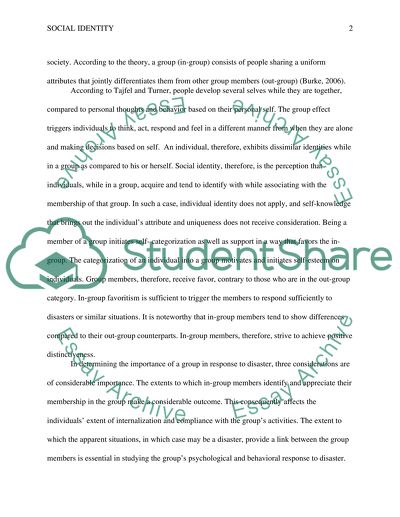Cite this document
(“Social Identity and Response to Disaster Essay Example | Topics and Well Written Essays - 1250 words”, n.d.)
Social Identity and Response to Disaster Essay Example | Topics and Well Written Essays - 1250 words. Retrieved from https://studentshare.org/psychology/1456098-how-are-groups-relevant-to-understanding
Social Identity and Response to Disaster Essay Example | Topics and Well Written Essays - 1250 words. Retrieved from https://studentshare.org/psychology/1456098-how-are-groups-relevant-to-understanding
(Social Identity and Response to Disaster Essay Example | Topics and Well Written Essays - 1250 Words)
Social Identity and Response to Disaster Essay Example | Topics and Well Written Essays - 1250 Words. https://studentshare.org/psychology/1456098-how-are-groups-relevant-to-understanding.
Social Identity and Response to Disaster Essay Example | Topics and Well Written Essays - 1250 Words. https://studentshare.org/psychology/1456098-how-are-groups-relevant-to-understanding.
“Social Identity and Response to Disaster Essay Example | Topics and Well Written Essays - 1250 Words”, n.d. https://studentshare.org/psychology/1456098-how-are-groups-relevant-to-understanding.


